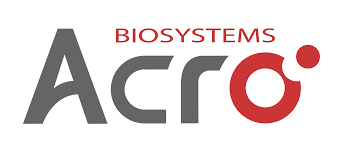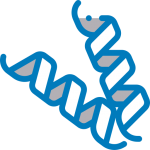
 Cynomolgus PSMA / FOLH1 Protein, His Tag (MALS verified)
Cynomolgus PSMA / FOLH1 Protein, His Tag (MALS verified)
PSA-C5247
1mg
Brand
ACROBiosystems
Description
Source :
Cynomolgus PSMA, His Tag (PSA-C5247) is expressed from human 293 cells (HEK293). It contains AA Lys 44 – Ala 750 (Accession # A0A2K5VNZ0-1).
Molecule : PSMA
Synonyms : FOLH1,PSMA,GIG27,FOLH,NAALAD1,PSM,NAALADase I,GCPII,FGCP
Format : Liquid
Category : Other Recombinant Proteins
Accession : N/A
Storage : -70℃
Shipping condition : Liquid,-70℃Dry ice
Molecular Weight : 81.4 kDa
Characteristics :
This protein carries a polyhistidine tag at the N-terminus. The protein has a calculated MW of 81.4 kDa. The protein migrates as 100-115 kDa under reducing (R) condition (SDS-PAGE) due to glycosylation.
Endotoxin Level : Less than 1.0 EU per μg by the LAL method.
Buffer : 25 mM MES, 500 mM NaCl, pH6.5
Description :
Prostate-specific membrane antigen (PSMA) is also known as Folate hydrolase 1 (FOLH1), Glutamate carboxypeptidase 2 (GCP2), N-acetylated-alpha-linked acidic dipeptidase I (NAALAD1), which belongs to the peptidase M28 family and M28B subfamily. FOLH1 / PSMA is stable at pH greater than 6.5. FOLH1 / PSMA is a type II transmembrane zinc metallopeptidase that is most highly expressed in the nervous system, prostate, kidney, and small intestine. FOLH1 / GCP-2 is homodimer and binds 2 zinc ions per subunit, and required for NAALADase activity. The catalytic activity of PSMA involved in releasing of an unsubstituted, C-terminal glutamyl residue, typically from Ac-Asp-Glu or folylpoly – gamma – glutamates. FOLH1 / GCP-2 / PSMA has both folate hydrolase and N – acetylated – alpha – linked – acidic dipeptidase (NAALADase) activity and has a preference for tri-alpha-glutamate peptides. GCP-2 / PSMA involved in prostate tumor progression and also exhibits a dipeptidyl-peptidase IV type activity. In vitro, cleaves Gly-Pro-AMC.
References :
(1) Grauer L.S., et al., 1998, Cancer Res. 58:4787-4789.
(2) Mesters J.R., et al., 2006, EMBO J. 25:1375-1384.
(3) Barinka C., et al., 2009, J. Med. Chem. 50:3267-3273.
Application
Reactivity



